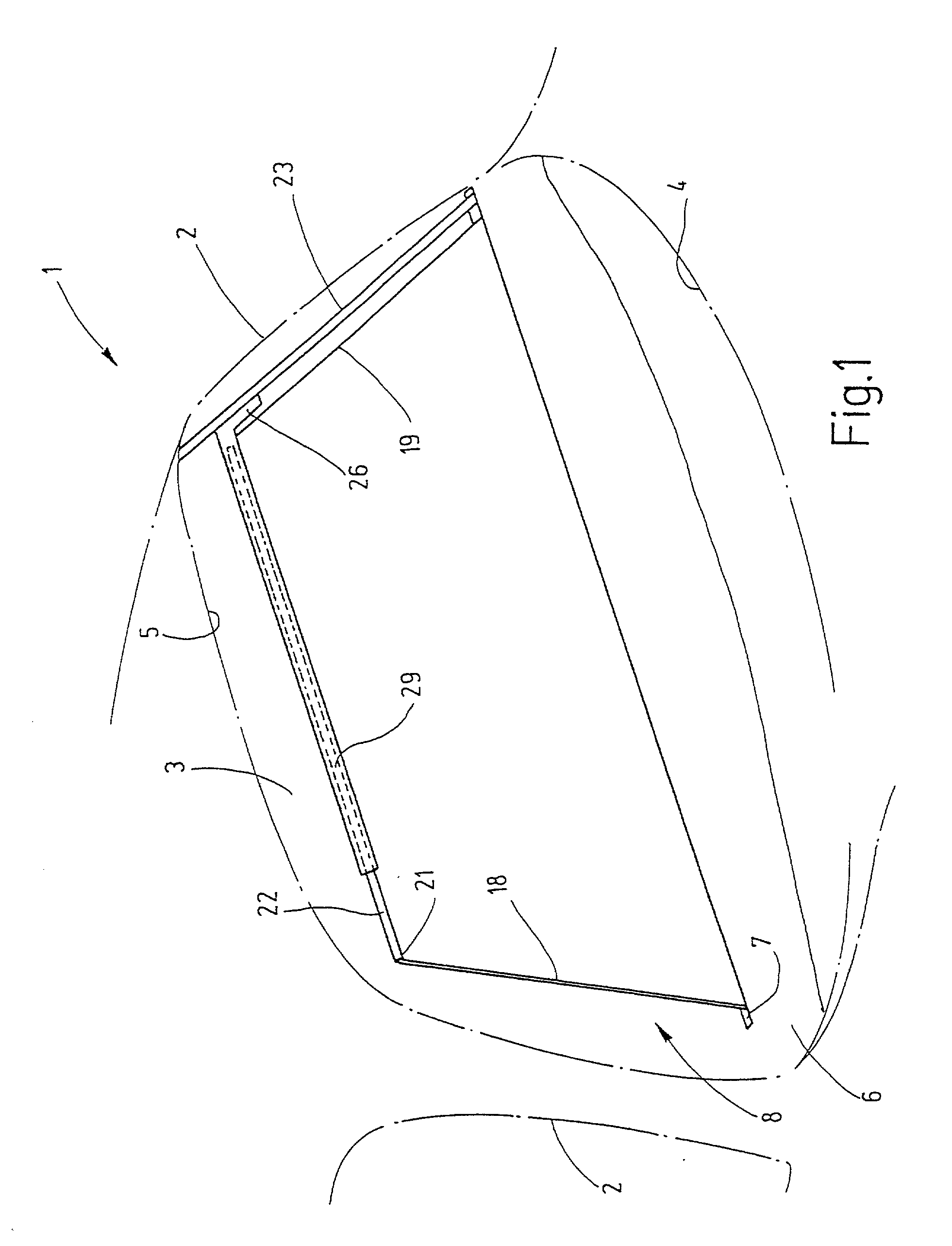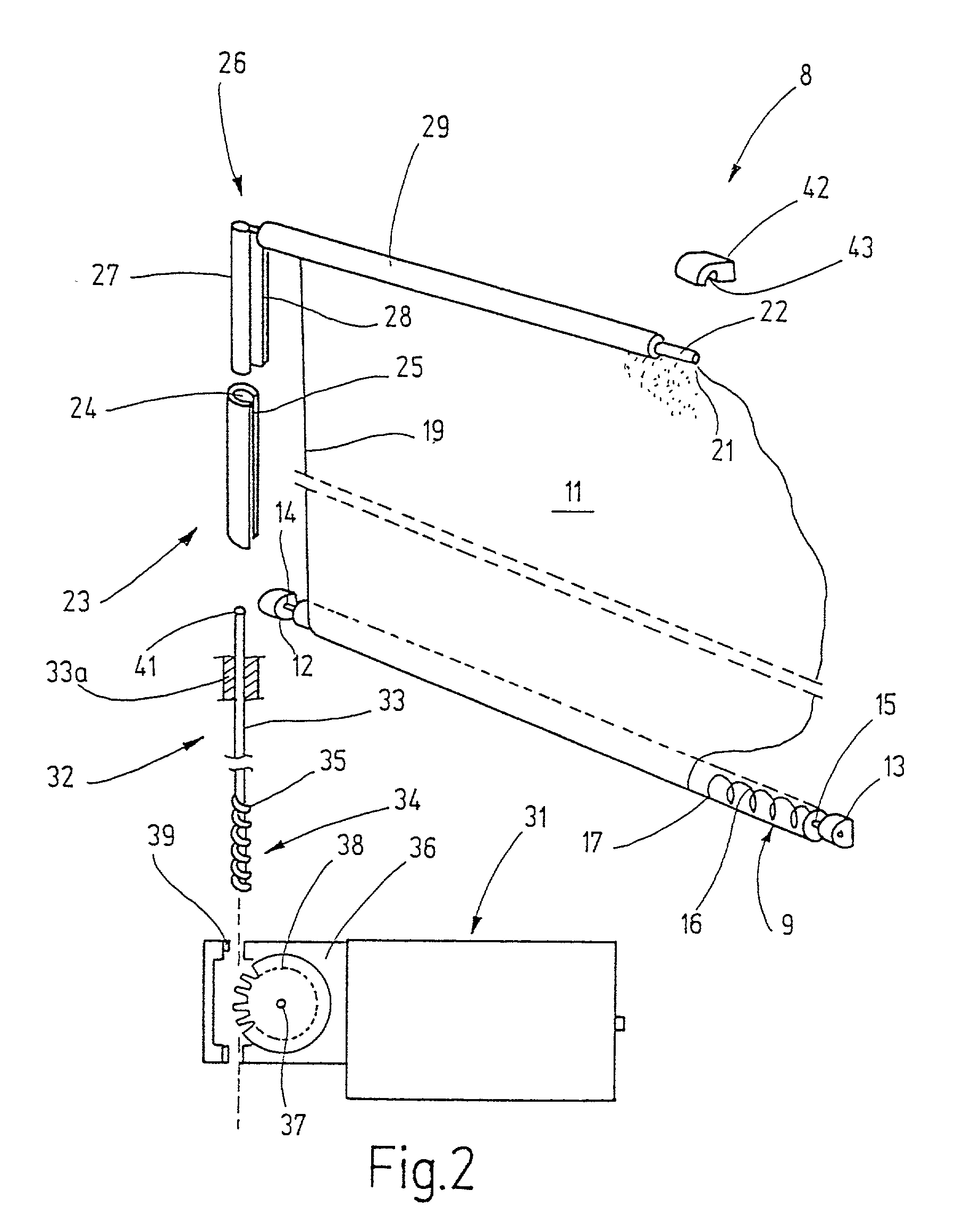Rear window roll-up blind
a rear window and roll-up blind technology, applied in the direction of curtain accessories, curtain suspension devices, building components, etc., can solve the problem that the rear window roll-up blinds are not suitable for the rear window pane of station wagons and similar motor vehicles, and achieve the effect of stable guidance of blind materials
- Summary
- Abstract
- Description
- Claims
- Application Information
AI Technical Summary
Benefits of technology
Problems solved by technology
Method used
Image
Examples
Embodiment Construction
[0032] In the following description of the figures terms such as "front", "rear", "above" or "below" as well as similar terms, inclusive of the terms "to the right" and "to the left", are used in the manner in which they are usually used for the designation of direction on a motor vehicle.
[0033] In FIG. 1, the rear portion of a motor vehicle 1 is schematically shown with a left and a right C-column. Between the C-columns, a rear window pane 3 extends from a lower edge 4 to a rear roof edge 5. In front of the rear window pane 3, a hat deposit area 6 is located which has a slot 7 running over its entire width. Further, a roll-up blind 8, which is shown in FIG. 1 in the reeled-out position, can be seen in the interior of the motor vehicle 1.
[0034] As shown in FIG. 2, the rear window roll-up blind 8 includes a winding shaft 9 which rotatably supported underneath the hat deposit area 6 and a blind material 11.
[0035] For supporting the winding shaft 9, bearing blocks 12 and 13 are provide...
PUM
 Login to View More
Login to View More Abstract
Description
Claims
Application Information
 Login to View More
Login to View More - R&D
- Intellectual Property
- Life Sciences
- Materials
- Tech Scout
- Unparalleled Data Quality
- Higher Quality Content
- 60% Fewer Hallucinations
Browse by: Latest US Patents, China's latest patents, Technical Efficacy Thesaurus, Application Domain, Technology Topic, Popular Technical Reports.
© 2025 PatSnap. All rights reserved.Legal|Privacy policy|Modern Slavery Act Transparency Statement|Sitemap|About US| Contact US: help@patsnap.com



